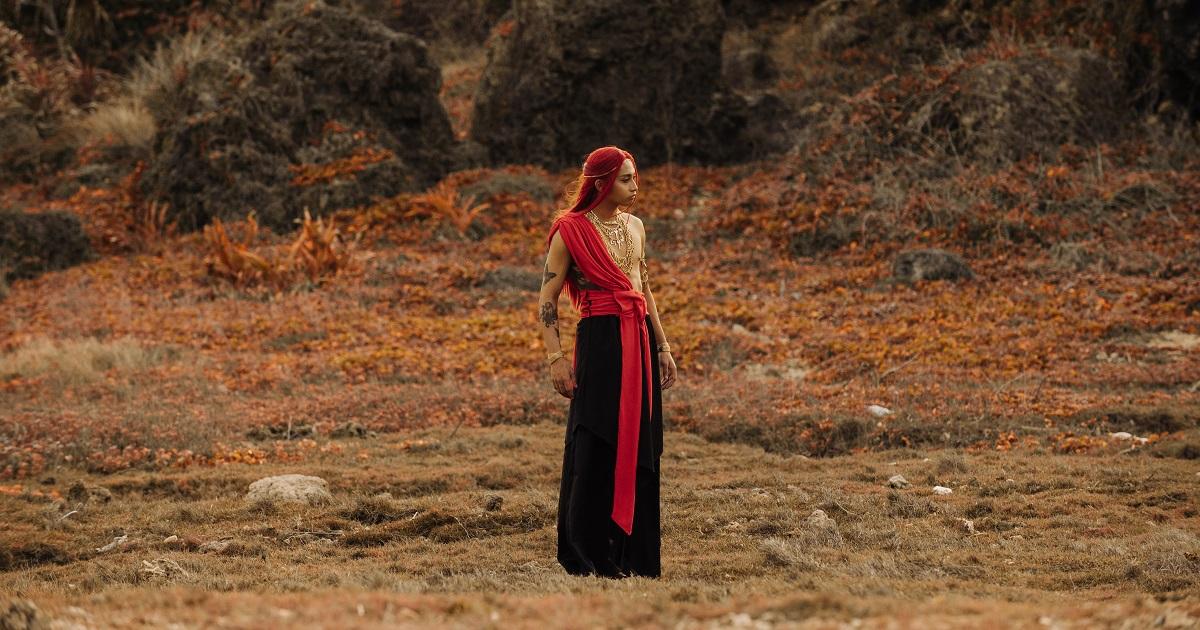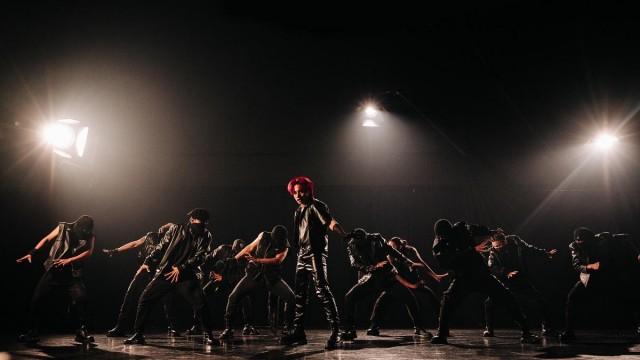SB19's Ken drops solo comeback as FELIP with 'Bulan'

Following his Bisaya solo debut "Palayo," SB19's Ken (who goes by FELIP in his solo endeavors) is back with another sizzling track, "Bulan."
The freshly dropped music video features the sand dunes of Paoay and the Graciano Cliffs along Cape Bojeador in Ilocos Norte as the backdrop for the battle between darkness and light, taking inspiration from the deities and mythological creatures of pre-colonial times.
Bulan, the primordial moon entity often described as androgynous and soft-spoken, is played by FELIP. Haliya, in most references Bulan's sister or daughter and the masked goddess of the moonlight, is played by ballerina Ramona Yusay. Darkness comes in the form of her archnemesis the Bakunawa, a serpent-like dragon who tries to swallow the moon and is believed to be the cause of catastrophes like eclipses.
The "Bulan" MV takes us on a journey to this world as FELIP uses ancient Filipino lore as a metaphor for how he chooses to respond to the negativity he receives. It harnesses FELIP's influences in hip-hop and rock music while adding ethnic elements into the mix. Compared to the smooth and sexy R&B groove of "Palayo," "Bulan" has a more is more experimental and aggressive sound, reminiscent of hip-hop tracks that are often used in krumping (which, incidentally, is all about releasing pent-up negativity through dance).
FELIP lays out his verses in half-time triplets, each line matching the growing intensity of the accompanying guitar riff. Stell Ajero, his bandmate in SB19, also lends his voice to the track as he chants at the intro and at certain intervals in the track, giving it an ethnic feel.
The artist shares more in this interview with GMA News Online.
What inspired you to write "Bulan?"
I've always been fond of our culture, especially ancient Filipino culture and mythology. Like the story of Bulan, Haliya, and the Bakunawa. I thought it would be good to explore the subject.
It worked out well because the story is a good metaphor for what I was writing, about crab mentality and how other people try to tear down those who are trying to pursue their dreams. Bakunawa tries to swallow the light but thankfully fails to do so.
Can you walk us through the process of creating the track? Did the melody come first, or the lyrics? Which artists did you collaborate with?
"Bulan" is a complex track, and I worked with several people to get it to what it is now.
I wrote the melody and the lyrics at the same time. After that, I sent it to Thyro Alfaro for mixing and mastering. You'll also hear a distinct voice at the intro—I worked with Stell, and [Pablo's brother] Josue, and I think they added a nice flavor to the track. For the guitars, I sent the arrangement and melody to Gino Madrid, who then recorded it with added effects.

How did you go about the concept for the music video?
We began building the concept when I sent a copy of the song to [production house and frequent collaborator] Chapters PH. We brainstormed on what we wanted the look and feel of the "Bulan" MV to be, and looked to a lot of good visual references like "Dune," "Prince of Persia," and "Obi-Wan Kenobi" for it.
When we saw the dunes and cliffs in Ilocos, we instantly knew it was a go-big-or-go-home moment and wanted to do the shoot up north. Looking at the final output, I can say it was worth the trip—and the particles of sand that I keep finding in my stuff until now!
What connects "Bulan" and your first solo "Palayo" together? And what are their most marked differences?
"Palayo" and "Bulan" are very different in terms of sound, references, and even the overall vibe. "Palayo" can be described as a chill R&B track, which is why we infused an element of sexiness into the music video, and the choreography is also very laid-back.
"Bulan," on the other hand, is more aggressive and experimental, and the MV is more on the cinematic side. You will also notice the difference in choreography, as we made sure to highlight in the MV.
In terms of similarity, they both talk about self-empowerment, especially in difficult situations. "Palayo" talks about self-love and walking away from a toxic relationship, and "Bulan" talks about recognizing that powerful being within you and not letting other people consume your light. It shows the darker, more confrontational side of self-love. Because sometimes, the negativity gets too loud to ignore and the only way to get rid of it is to acknowledge the power that you hold and face it head-on.
"Bulan" has lyrics about how negativity is being normalized—"'Di na bago sa 'kin 'to [This isn't new to me]," and for me, the way forward is to dismantle that kind of thinking—"Dapat lang basagin 'to! Umaapoy, sunugin 'to. Kung manalangin 'kala mo santo, patahimikin 'tong hipokrito! [This should be shattered, set on fire! When they pray they act saintly, silence this hypocrite!]"

What can your fans look forward to in the "Bulan" era and beyond? Any message for them?
Expect the unexpected. I know I tend to spoil a lot of things, but that's honestly just the tip of the iceberg. Because of them, I am inspired to create more music and art, so know that "Bulan" is just the beginning of a lot more to come.
Thank you, everyone, from the bottom of my heart, and always remember that Bulan lives in all of us, kaya wag magpaapi sa Bakunawa! [Don't let Bakunawa defeat you!]
—MGP, GMA News





